Transform Your Garden: Top Xeriscape Ideas for Sustainable Landscaping in Austin, TX

Feb 22, 2024
In Austin, TX, an area prone to drought, xeriscaping is becoming a go-to landscaping practice. This environmentally conscious style requires minimal maintenance while helping conserve water and displaying breathtakingly vibrant colors with abundant wildlife, making it the perfect combination of beauty and sustainability.
Key Takeaways
- Xeriscaping is essential in Austin, Texas, due to its drought-prone climate, and can save up to 50–75% of water use, reduce maintenance, and potentially increase property values by around 15%.
- The selection of native plants, ornamental grasses, succulents, and cacti that are adapted to local conditions is crucial for creating an efficient and sustainable xeriscape garden in Austin.
- Effective xeriscape design in Austin involves soil preparation with organic matter, the use of mulches to preserve soil moisture and control weeds, and the implementation of drip irrigation systems to optimize water use.
Embracing Xeriscape in Austin, Texas
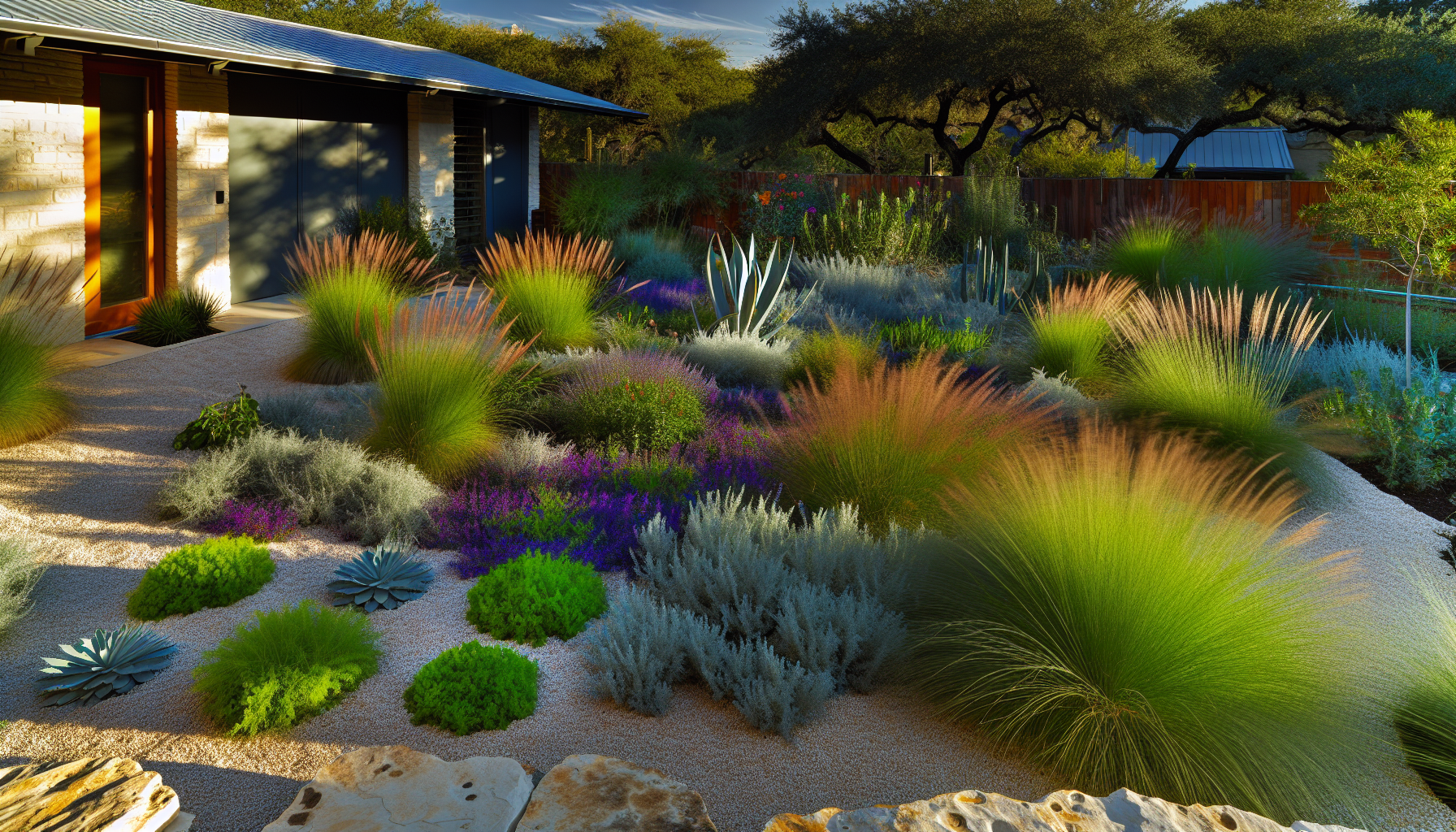
Xeriscaping, first implemented in the late 1970s as a water-saving measure, involves designing outdoor spaces with plants and shrubs that have lower moisture requirements, like native greenery or ornamental grasses. Austin, Texas, is an ideal place for this practice due to its heat and dry climate. It has become increasingly necessary because of the drought conditions present throughout Central Texas, Natural rainfall may not be sufficient, so xeriscaping provides an essential solution by conserving valuable resources while minimizing upkeep needs.
The Importance of Xeriscape in Central Texas
Xeriscaping has considerable relevance in Central Texas due to the area’s drought-prone climate and frequent water restrictions. It allows for a sustainable, water-saving transformation of any outdoor space through certain practices, such as the utilization of wood chip mulch or native plants that fit into local weather conditions. When planting similar species with the same requirements together, using drip irrigation systems instead of typical sprinklers can lead to an even more efficient landscape while reducing maintenance needs like mowing by up to 50 percent and ensuring competition is minimized among other vegetation types. By using these techniques, you not only preserve valuable H2O but also establish adaptable landscapes along your home’s exterior.
Benefits of Exercise
Xeriscaping offers considerable benefits apart from just water savings. Its implementation can result in a decrease of up to 75% in the use of H2O while establishing native plants that are resistant to drought and applying mulches for weed control as well as moisture conservation. It involves very little upkeep due to its reliance on local vegetation, which is adept at surviving such climate conditions, along with efficient watering systems like drip irrigation.
Xeriscaping also has positive impacts on property value appreciation, – an average increase of 15%. It provides attractive landscapes that require less money spent on maintenance or hydration costs without compromising aesthetic appeal either way!
Choosing the Right Xeriscape Plants for Your Austin Landscape
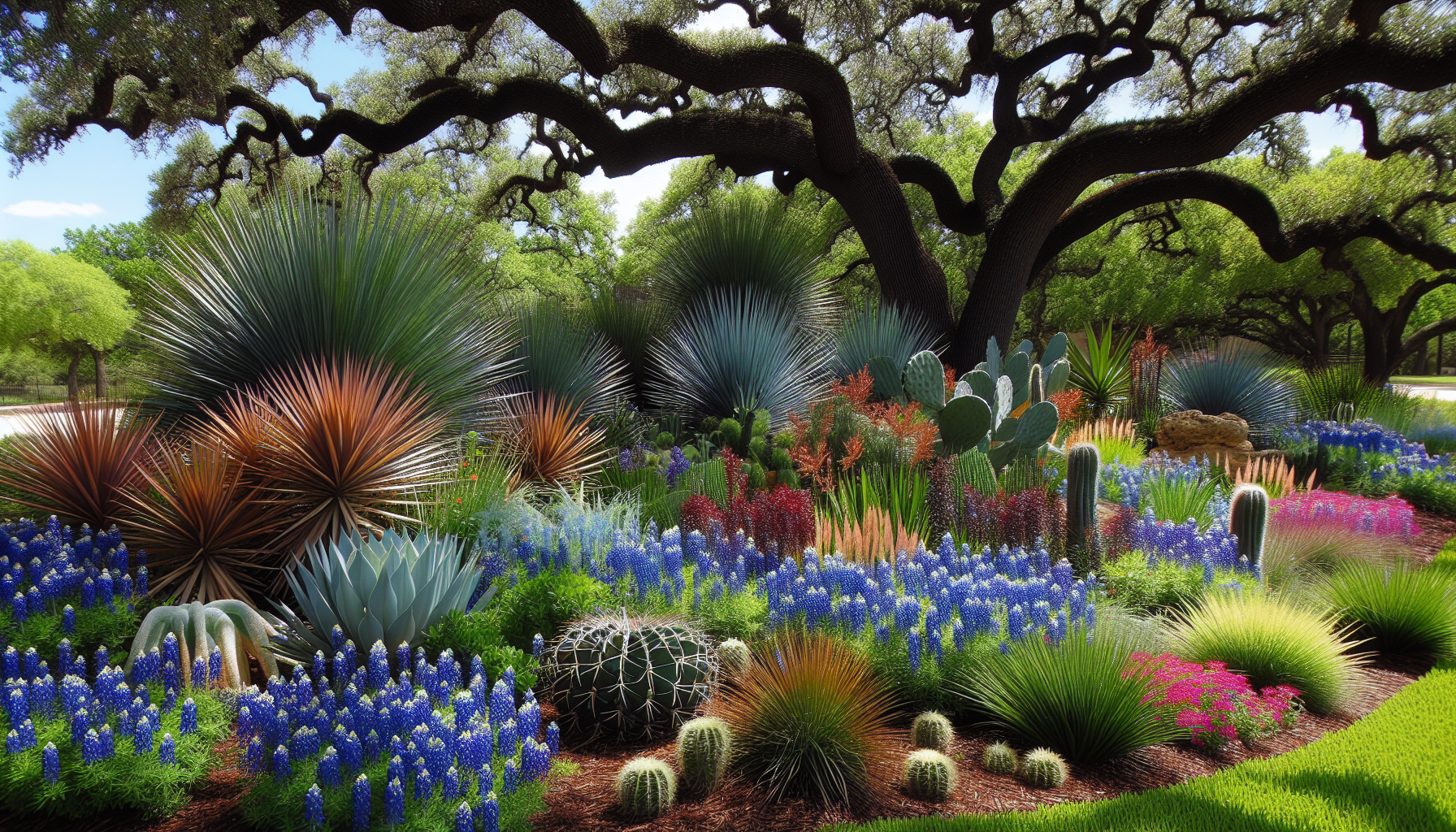
For cultivating a successful water-wise xeriscape garden in the Austin, Texas, area, it is important to select plants that are compatible with local climates and rainfall levels. Native species such as Agave, Yucca, Hesperaloe, and Cacti should be considered first due to their high drought tolerance, while other suitable options include Tropical Sage, Firecracker Fern, or Mexican Mint Marigold, which can all withstand minimal irrigation amounts. Acacia variants like Russian Sage, Juniper Butterfly Bush, and Lantana Abelia make for good selections too since they tolerate the arid conditions of this particular region quite well. For Variety, Dwarf Yaupon Holly Barberry Autumn Sage as well as Flame Acanthus (Texas) will also create an eye-catching Xeriscaped atmosphere around your outdoor space.
Native Plants and Shrubs
Central Texas native plants and shrubs have adapted to the arid climate, long summers, mild winters, and short shade periods over time. These peculiar adjustments allow them an impressive tolerance of local soil conditions as well as resistance against drought-induced diseases. Consequently, they require less maintenance than non-native varieties in other regions. Native species found in Austin’s xeriscape gardens are especially inclined toward water conservation for their optimal growth, which is essential for sustainable garden ecosystems overall. These plantings play a critical role by drawing many diverse creatures, such as insects, birds, or wildlife, closer together. Benefiting biodiversity within this particular type of landscaping style immensely.
Ornamental Grasses
Ornamental grasses are the best option for xeriscaping due to their drought tolerance, low upkeep, and minimal water usage. They add texture as well as motion in these specific gardens; ‘Karl Foerster’s Feather Reed Grass, Fountain Grass (‘Hameln’), Prairie Dropseed, and Switchgrass are a few of them that provide alluring appearances. Water conservation can be an effortless practice when it comes to utilizing ornamental grass varieties along with other aspects within a xeric landscape design.
Succulents and Cacti
The beauty of succulents and cacti in a xeriscape garden is incomparable, bringing creative designs to life. They offer the perfect addition by producing shade for other plants while simultaneously adding interesting heights and textures. In Austin areas where this type of gardening is common practice, it’s important to water every 5-6 days during peak growth periods, at least once per week outdoors or two weeks indoors if possible.
Designing Your Xeriscape Garden: Tips from Austin Landscape Architects
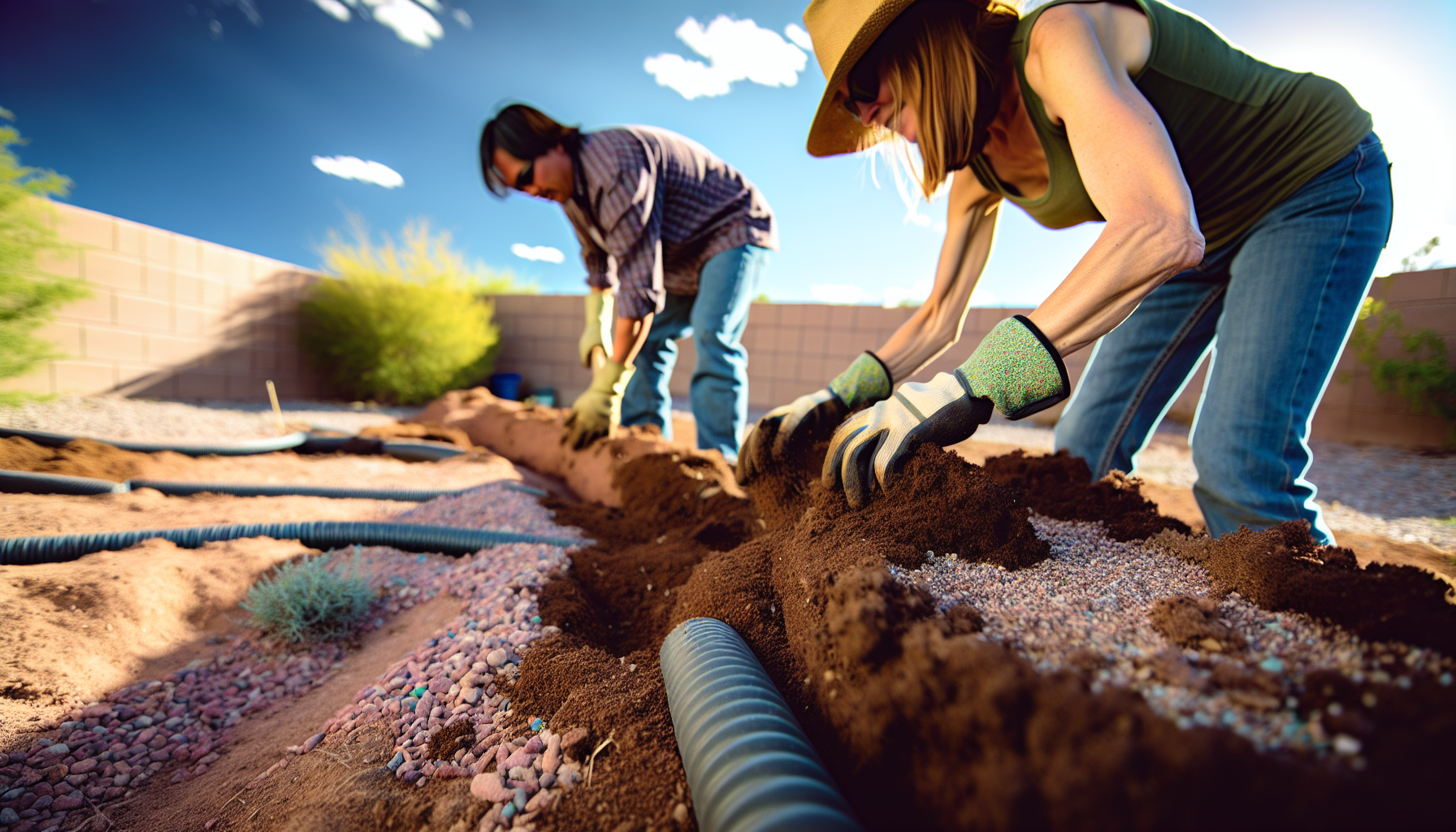
When it comes to creating a flourishing xeriscape garden, no one is more competent than specialized Austin landscape architects. They point out the importance of proper soil preparation and selecting fitting amendments in order to design an effective landscape. Hence, these are necessary steps for any successful landscaping project in Austin or anywhere else involving plants.
Soil Preparation and Drainage
Creating a successful landscape garden in Austin, Texas, requires healthy soil with added organic material. Rich and fertile soils can be enriched by incorporating items such as shredded pine bark, rice hulls, compost, or manure to improve the air spaces of clay surfaces and water retention capabilities for sandy and rocky terrains. Adding ingredients like compost, peat moss, or aged manure increases drainage capacity, which helps maximize the beauty and efficiency of any xeriscaping project set within the city’s limits.
Mulching Strategies
Using organic mulch is essential to ensuring soil moisture, evaporation control, and curbing weed growth in Austin. These factors boost water conservation while creating an ideal environment for plants, which makes xeriscaping feasible. The most fitting types of mulch specifically suited to such purposes are Native Texas Hardwood Mulch, Shredded Cedar, and Pine Needles. All three help preserve the integrity of the soils around Austin’s Texan area.
Drip Irrigation Systems
In Austin, Texas, particular drip irrigation systems have been created with xeriscaping in mind to promote deep root growth and minimize water consumption. This strategy calls for watering the plants less often but more deeply through emitters that deliver the moisture directly to their base gradually and consistently. As such, it provides a more efficient method of keeping up the hydration requirements of xeriscape plants than other alternatives.
Creating Lush and Vibrant Outdoor Spaces with Xeriscape Principles
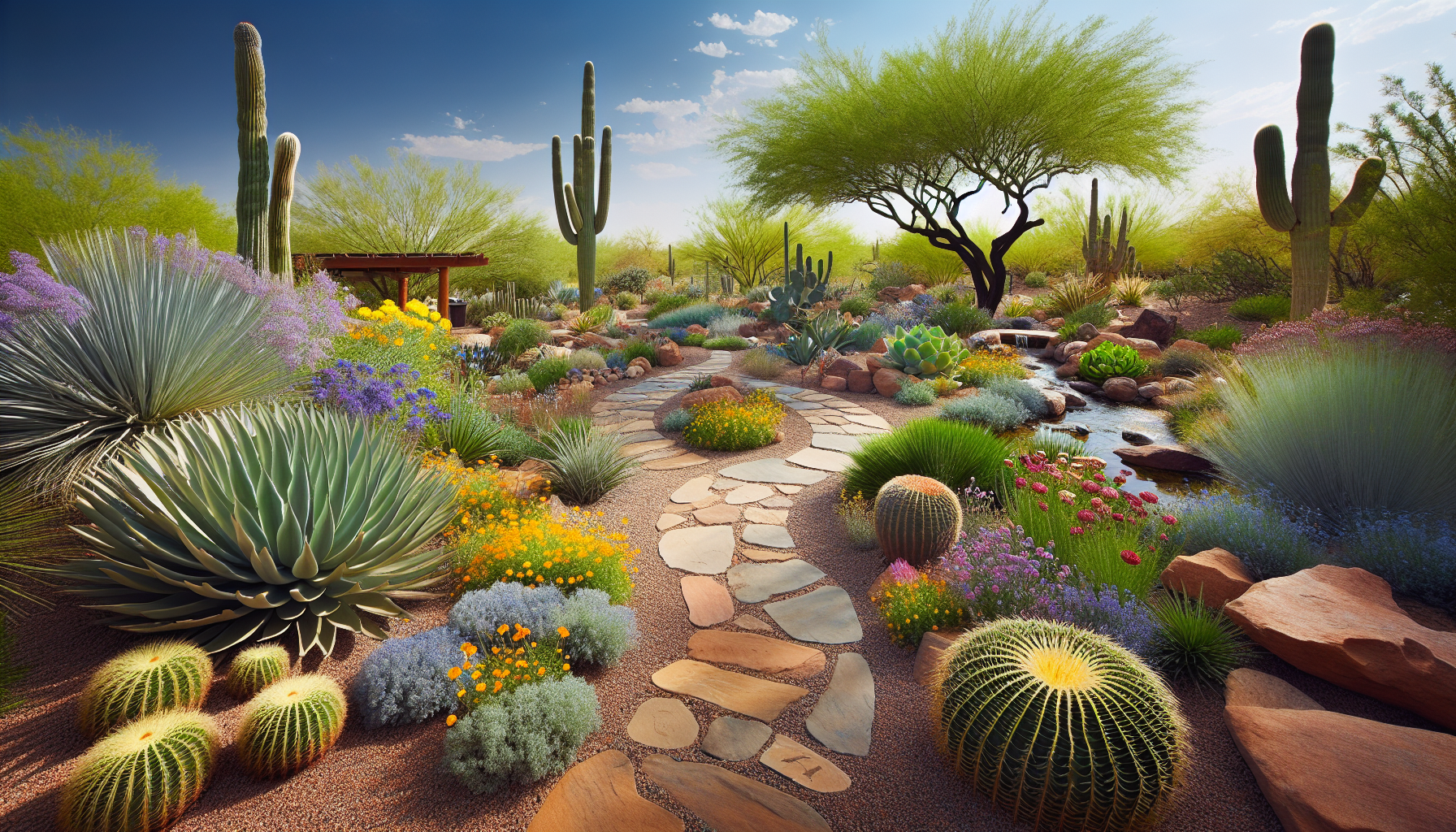
Creating a landscape garden can be quite rewarding if done with proper planning and design. One that is attractive, lush, and vibrant while being sustainable. To make the most of your outdoor space without compromising its sustainability features, incorporate trees for shade as well as colorful flowers and foliage to enhance its beauty.
Incorporating Trees and Shade
In Austin, Texas, xeriscaping involves utilizing trees in a garden to assist with water conservation. Trees help by cutting down on evaporation and keeping the surrounding air cooler as well as the soil under them humid. This ultimately creates an even cooler microclimate for any plants underneath it, all within Austin’s areas of Texan climate conditions like Cedar Elm, Live Oak, Monterrey Oak, or Red Oak tree species specifically suited for this purpose here locally.
Adding Colorful Flowers and Foliage
When creating a xeriscape garden in Austin, Texas, to boost its visual appeal and attract pollinators, flowers of various colors can be used. These include rock rose, columbine, yellow bells, and lantana, as well as cacti and Mexican milkweed, which thrive when grown there. Adding shrubs or trees with vivid foliage, such as succulents, will add extra striking hues to the space.
Designing for Wildlife
Designing a xeriscape garden with native plants that appeal to wildlife is an effective way to promote local biodiversity and create a thriving ecosystem. By incorporating flowers that can attract hummingbirds and butterflies, as well as birdhouses, bat boxes, or bee hotels for habitat creation, all this will contribute significantly towards making the environment more liveable.
Case Study: A Successful Xeriscape Transformation in Austin, TX
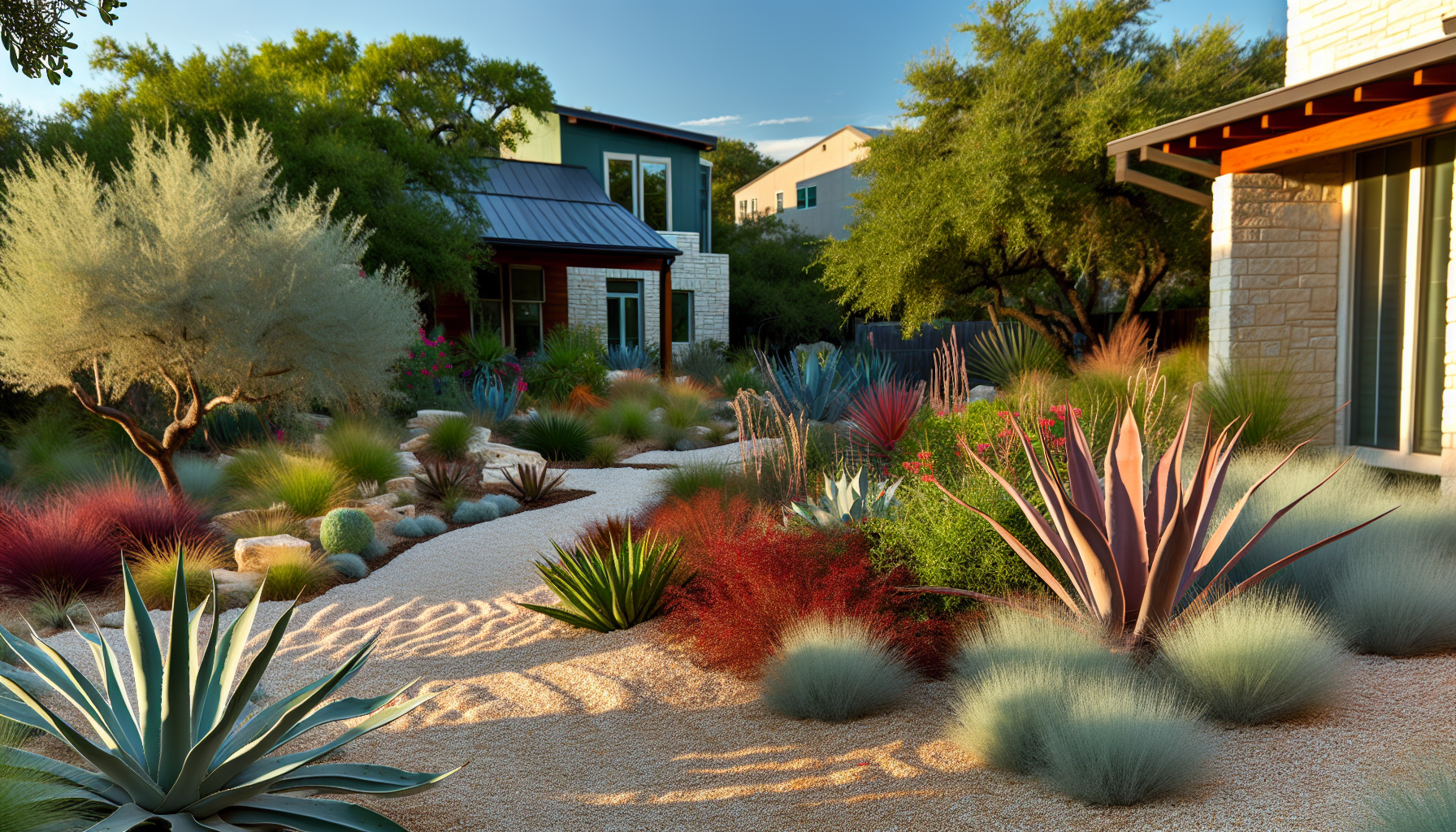
In Austin, Texas, we will look at a successful xeriscape transformation to show the possibilities of this water-conserving landscape design. Three prominent and renowned landscaping professionals in Austin who specialize in creating such designs are Kevin Wood Landscapes, Anderson Landscapes, and Cutters Landscapes. These experts used mulch around each plant as a way of reducing evaporation from the soil while also regulating its temperature level and minimizing weed growth.
On top of that, efficient methods were implemented during irrigation, like low-flow drip systems, so they could conserve more water when tending to different types of plants. This was done by grouping them according to their individual needs for moisture levels.
Summary
Xeriscaping is the perfect way to create a beautiful, lush garden in Austin, Texas. An area prone to droughts. From selecting and planting plants that are appropriate for this climate, to properly prepping soil, mulching efficiently, and installing the correct irrigation system, your outdoor space can be kept vibrant with less maintenance required while conserving water resources, which will result in increasing property value. With xeriscaping, there’s no reason not to embrace sustainability!
Frequently Asked Questions
What are the 2 disadvantages of using xeriscaping in landscaping?
Reducing plant variety and needing initial investment for new plants. However, it can save water in the long term.
How do you xeriscape in Texas?
Xeriscape, a water-wise landscaping method used to minimize usage of the precious resource in Texas, involves reducing turf areas and planting drought-tolerant vegetation combined with shade elements. These techniques are commonly incorporated into xeriscaping designs for optimum efficiency.
Do you need to remove grass before xeriscaping?
Xeriscaping doesn’t necessarily have to involve the removal of all grass, as it provides beneficial environmental effects and helps keep temperatures cool.
What time of year is best to xeriscape?
The most financially sensible option for getting your lawn ready for spring and summer is to xeriscape in the fall. This practice enables you to make sure your landscape will be beautiful when warmer weather arrives without overextending yourself budget-wise.
What is xeriscaping?
Xeriscaping, which began in the late 1970s as a way to save water resources, involves landscaping with native plants and shrubs that require minimal moisture, such as ornamental grasses. This practice has become popular due to the need for fewer watering needs than traditional landscape options.
- Categories
- City Guides |
- Relocation Guides



